
Homemade Gluten Free Pasta Recipe
The best homemade gluten free pasta dough recipe is one made by measuring individual flours on a digital scale. A culinary adventure awaits!
Print
Pin
Ingredients
- 130 grams sorghum flour
- 50 grams potato starch
- 40 grams teff flour
- 40 grams tapioca starch
- 6 grams psyllium husk powder (2 tsp)
- 2 grams xanthan gum (½ tsp)
- 110 grams boiling water (~½ cup)
Instructions
- Set aside a bowl with tapioca starch to use for sprinkling when the dough is sticky.
- Measure dry ingredients in food processor or electric mixer.
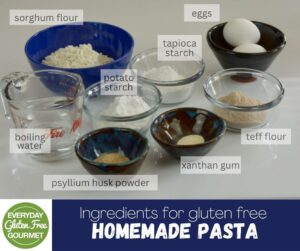
- Turn on to briefly combine. Add boiled water with motor running and mix until combined.
- Add egg and continue mixing until smooth dough is formed.
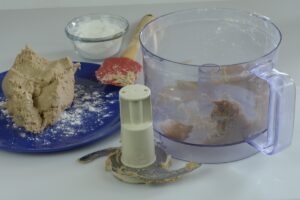
- Turn dough onto counter and lightly sprinkle with tapioca starch. Cut into 4 pieces. Work with one piece at a time keeping the remaining pieces of dough covered with a dry cloth.
ROLLING PASTA WITH A HAND-CRANK MACHINE
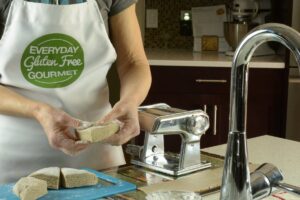
- Flatten one piece of pasta dough with your hands or a rolling pin. Feed the flattened dough through the roller as you turn the crank.

- Place the dough lengthwise in front of you. Fold each side over in thirds. Repeat the process 3-4 times until the dough is smooth and the width of the pasta roller. This is the important step where you are trying to make a single piece of smooth dough with even edges that are the width of your machine. Keep rolling it until you have fairly smooth edges, even if it takes 10 times.
- Adjust the pasta roller to the next setting and feed the dough through again. Repeat this process, adjusting the roller to a narrower setting each time until you reach the desired thickness for your pasta.*

- When a piece is too long to manage, lay it on the counter and cut it in half.
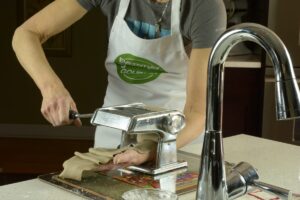
- Once your pasta is the desired thickness it can be cut into any shape. Repeat this process with the remaining portions of dough. Shape as desired.
- Many hand-crank machines have a setting for fettuccini so that's a great place to start.
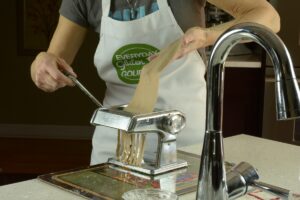
- As each piece of pasta is cut into fettuccini carefully twist and twirl into a loose nest. Lay on a baking sheet to dry slightly as you repeat the process with each piece of dough.
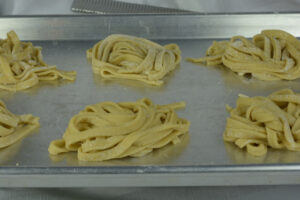
- If not using within 30 minutes cover and refrigerate. Cook within 3 days.
COOKING FRESH GLUTEN FREE PASTA
- Cook fresh pasta in plenty of boiling water for 3-5 minutes depending on the thickness. **
- Start checking the pasta after the first few minutes to avoid over cooking. Keep notes so you can perfect the thickness and cooking time for perfect pasta every time.
- Drain, rinse briefly to stop cooking process. Toss with hot pasta sauce and serve immediately.
Notes
*The number of settings each roller has varies by manufacturer. My machine starts at 1 (the widest setting) and has 7 settings, 7 being the thinnest. Some machines are the opposite and may have a different number of settings. Always start with the widest setting.
Personal note: On my machine setting 4 is a bit too thick for my taste. Setting 5 and 6 takes more practice but is better for ravioli and tortellini where you're biting through 2 thicknesses of the dough each time. I'm still practising.
**Fresh pasta cooks much faster than dried pasta. Don't skimp on the water and pay attention to the clock.